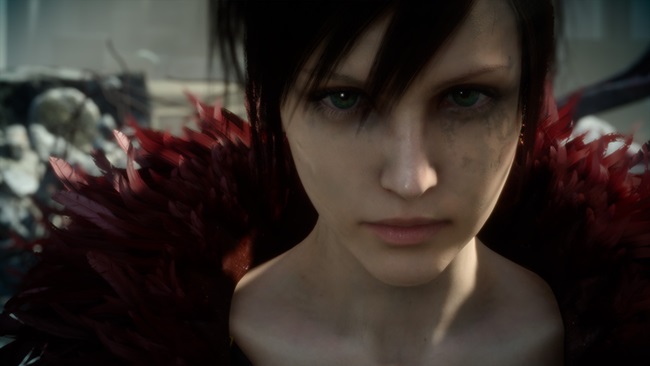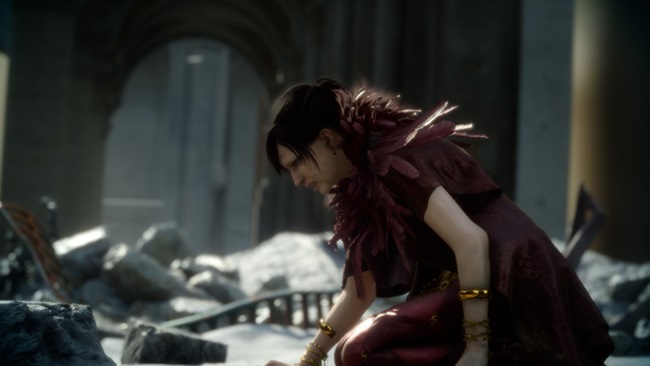As Nvidia noted, tech demos often end in tears. But that was the whole point in a demonstration today at the Microsoft Build 2015 developer conference.
Today, developers created a close-up animation of a crying woman’s face that will have you wondering if it’s real.
The challenge of creating an animated human face has been labeled the “uncanny valley.” The problem is that with computer graphics, the closer an animation gets to complete realism, the more alien or foreign the feeling is. The artificial face produces an emotional reaction that usually suggests there’s something wrong with the animation.
But with DirectX 12 graphics technology, Microsoft, Nvidia, and Square Enix took a stab at getting it right. They showed the Build audience a research project called “Witch Chpater 0 [cry],” they portrayed a crying human, which is one of the most difficult emotions to convey in digital form. The goal was to do it at “a level of quality never seen before with a real-time, computer-generated character,” Nvidia said.
“WITCH CHAPTER 0 [cry] features the most ambitious real-time, cinematic-quality graphics ever undertaken,” said Jen-Hsun Huang, chief executive of Nvidia, in a statement. “Square Enix’s achievement is nothing short of breathtaking. I am delighted that their amazing team turned to [Nvidia] to help bring WITCH CHAPTER 0 [cry] to life. This is a preview of the beauty and artistry of video games to come.”
Overcoming the uncanny valley has been a goal for computer-generated graphics for decades. But the project uses Microsoft’s DirectX 12 applications programming interface, Nvidia’s GeForce graphics, and Square Enix’s game development skills. Their hope is that DX12, which will arrive with the delivery of Windows 10, will deliver the tools that make it much easier to immerse players in believable digital gameplay.
“We’ve designed DirectX 12 to deliver industry leading performance across the widest range of form factors and graphic cards,” said Steven Guggenheimer, corporate vice president and chief evangelist at Microsoft, in a statement. “The work Square Enix is doing plays a valuable role in exhibiting the potential of DirectX 12 to enable even greater innovation and optimized game performance.”
The results will be incorporated into Square Enix’s Luminous Studio engine. The demo used an Nvidia GeForce GTX Titan X in a four-way SLI configuration in a PC.
“Our team has always pursued cutting-edge pre-rendered and real-time CG,” said Hajime Tabata, head of the next-generation technology research project and Division Executive of Business Division II of Square Enix, in a statement. “As a part of the technical development, we created this demo using world-class, real-time CG technology with generous support from [Microsoft and Nvidia]. The efforts from this project will power future game development as well as Final Fantasy XV, currently a work in progress.”
“Square Enix is working on this next-generation research project as a showcase for our technology and creativity which will lead the future of Square Enix,” said Yosuke Matsuda, president and representative director of Square Enix, in a statement. “The results will be used to further advance the quality and technical expertise of our games. We will continue to pursue this research on cutting-edge technologies including high-end real-time graphics using the innovative DirectX 12.”
VentureBeat's mission is to be a digital town square for technical decision-makers to gain knowledge about transformative enterprise technology and transact. Learn More


